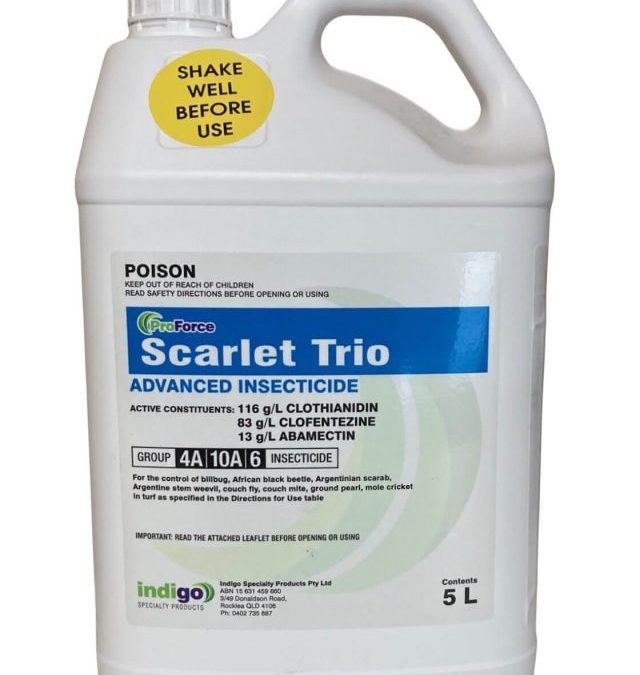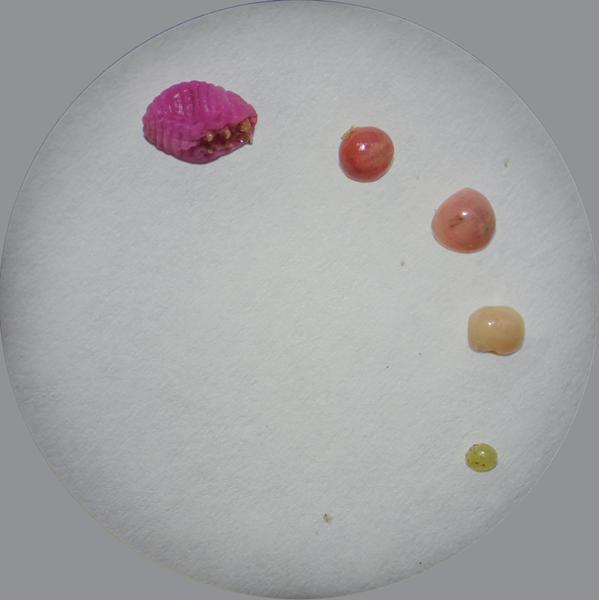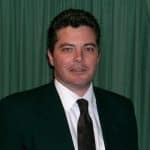The first step to carrying out ground pearls control is understanding what they are. Ground pearl treatment is becoming more of an issue, as these pink pearls are becoming an increasing problem in sugar cane, vines, grapes, oil palms and turfgrass. They are scale insects belonging to the family Margarodidaeand and look like pink pearls.
As their name suggests they can be seen under the soil surface as small pearl-shaped balls in the thatch or soil. The female is pink and has easily seen claws and forelegs. The male is smaller than the female but has a slender waxy “tail” up to 6mm long. The actual “pink pearl” is the nymph which has a hard, globular, yellowish-purple shell. Encysted nymphs are up to 1.5mm in diameter.1Buss EA. (May 2009). Insect Pest Management on Turfgrass. EDIS. (29 November 2012)
This, waxy, spherical covering of the insect is the most likely structure you’ll see in the field. Immature first-instar nymphs and cysts (second instars) are feeding instars, especially in sandy soils; however, adult males and females lack mouthparts and do not feed. The image below is courtesy of NC State Extension.
Ground Pearl Damage.
Damage from Ground pearl nymphs causes circular patches that look like a fairy ring. You often see this during dry weather as irregular patches of turf, that turn yellow or brown in the summer and die in winter or never green up in spring. Each year these patches enlarge and the problem worsens.
This damage is caused by Ground Pearls nymphs extracting juices from underground plant parts. This removal of nutrients from roots gradually weakens the host plants. If you suspect Ground Pearl activity check out the boundary between healthy and chlorotic turf, as this is where the greatest numbers are usually found2Potter, D.A. 1998. Destructive Turfgrass Insects: Biology, Diagnosis, and Control. Ann Arbor Press, Ann Arbor, Mich..
Biology of Ground Pearl
Over the last decade ground pearl in turf have become more of an issue along the Eastern seaboard of Australia. Sporting venues such as bowling greens, golf clubs and even sports grounds have all reported instances of the damage these cause. The roots of couch, buffalograss, and zoysia, are most commonly infested with ground pearls which can easily be identified by there pink pearl appearance.
Lifecycle of Ground Pearl
Pink-coloured females usually mature in late spring and emerge from their cysts. They then tunnel 50-75mm into the soil, whereupon they secrete a waxy coat. Within this covering they lay up to 100 eggs. If conditions are right a female may lay eggs several times a year. After only a few days the eggs hatch.
The first instars (also called crawlers) then move and infest roots. Once established, the nymphs begin to secrete their outer covering and develop into “pink ground pearls.” However, if conditions are not favorable for emergence, female nymphs may remain in the pearl stage for several years. In fact, Ground pearls have been known to survive for 15 years in the absence of a suitable host3Brandenburg, R. 2003. Don’t give up on ground pearls. Grounds Maintenance. (http://www.grounds-mag.com/mag/grounds_maintenance_dont_give_ground_2)..
During the summer and into the autumn the nymphs continue to develop. By late autumn or early winter the insects are adults and overwinter in the cys (pearl) surrounding them. The life cycle appears to be predominately parthenogenic.
The slender nymphs emerge in mid-summer and infest grass rootlets. Once they initiate feeding, nymphs soon develop the familiar globular appearance which makes ground pearl treatment so difficult. There is usually one generation each year.
Movement of ground pearl
From the above, you can figure out that these aren’t very mobile. Their small size and the fact that they live below the surface means that they are unable to move very far under their own power. This is a big issue when it comes to ground pearl control. To get to a new feeding site they must dig through the soil. One estimate is that they only move a maximum of 10-15 cm per year4Hoffman E, Smith RL. 1991. Emergence and dispersal of Margarodes meridionalis (Homoptera: Coccoidea) in hybrid bermudagrass. Journal of Economic Entomology 84: 1668- 1671.. This inability to move very far is a key part of any cultural control program.
Control
There re two options for ground pearls treatment. These are cultural and with the launch of Scarlet Trio, a new chemical control.
Cultural Control
As chemical control options are so limited (See Scarlet Trio) cultural control of ground pearl in turfgrass is currently the most effective approach to managing this pest.
- Don’t use grass from infected sites if you’re establishing turf with sod or sprigs;
- Ensuring nutrition and water are not limiting growth will give you a better chance of getting recovery as fast as possible;
- Use a premium soil wetter such as HydroForce Ultra. If you can get water further down into the soil profile you will produce healthier turf and also get any chemical applications further down into the profile;
To my mind, this first control measure is the most important but is one that appears to be seldom carried out. If you are moving between sites thoroughly clean equipment to minimize the spread of ground pearls. As they only move 10-15cm a year cleaning soil from aeration equipment, wheels of equipment and not using infested vegetative material will all limit its movement.
Chemical ground pearl treatment
One of the problems with getting successful ground pearl control has been the presence of the waxy coating on the nymphs. This has meant that ground pearls are invulnerable to insecticide treatment when inside these pink pearly cysts. as they are protected. This means that the focus of any chemical control must be the adult females and crawlers as these are not covered with cysts or wax. This is the reason why ProForce Scarlet Trio clearly states on the label that you should apply when adults or crawlers are detected generally from early spring to the end of summer. At this time Ground Pearls are at their most vulnerable.
Research at Clemson University evaluated insecticide applications for ground pearl control and found that three months post-treatment, no product had an impact on ground pearl populations. At nine months, products containing the active ingredients clothianidin (combined with a wetting agent) and thiamethoxam seemed to have some efficacy but do not provide “great” control.
One thing to note is that broad-spectrum insecticides (particularly products like Sevin that have the active ingredient carbaryl) had higher numbers of cysts and likely harm beneficial natural enemies 5https://www.gcmonline.com/course/environment/news/ground-pearls-turf. Ultimately, maintaining a healthy, vigorous turf cover in hopes of minimizing damage is the best current recommendation.
Part of this approach will be carefully selecting any pre-emergent herbicide to minimize root damage. Anything that impacts on healthy root growth will make damage caused by this pest worse. So avoid using pre-emergent herbicides that have the potential to cause root pruning.


References
Graduated from Newcastle University with an Hons Degree in Soil Science in 1988, Jerry then worked for the Sports Turf Research Institute (STRI) as a turf agronomist before emigrating to Australia in 1993.
He followed this by gaining a Grad Dip in Business Management from UTS. He has worked in a number of management roles for companies as diverse as Samsung Australia, Arthur Yates and Paton Fertilizers.
He has always had a strong affinity with the Australian sports turf industry and as a result he established Gilba Solutions as an independent sports turf consultancy in 1993. Jerry has written over 100 articles and two books on a wide range of topics such as Turf Pesticides and Nutrition which have been published in Australia and overseas.



